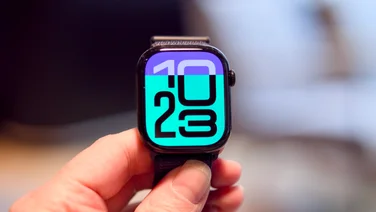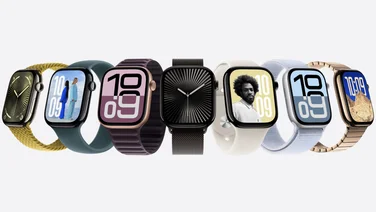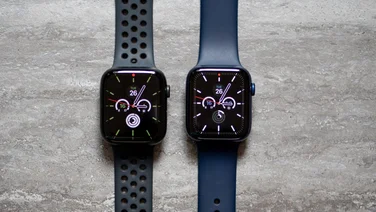To help us provide you with free impartial advice, we may earn a commission if you buy through links on our site. Learn more






Until recent years, portable personal cooling options have been fairly limited to pocket fans and cooling mists. If you find these handheld options insufficient on hot summer days, Sony’s Reon Pocket is an interesting wearable alternative. Instead of blowing cool air, it uses Peltier coolers, like those found in camping fridges, to directly cool or heat the skin in between the shoulder blades.
In essence, it operates as a kind of personal air-conditioning system to help regulate the user’s temperature. This morning, Sony has launched the product’s latest iteration: the Reon Pocket Pro, less than a year after its predecessor, the Reon Pocket 5.
Sony Reon Pocket specifications
- Wearable cooling or warming device with twin alternating thermo modules
- Worn against the skin between the shoulder blades
- Temperature, humidity and movement sensors set cooling/warming modes automatically
- Bluetooth app control
- Internal battery provides up to 34 hours of cooling
- Charges via USB-C
- Price: £199
- Availability: Pre-order from Sony from 20th May, 2025
Key features and first impressions
The Reon Pocket Pro is a battery powered wearable cooling device that’s worn around your neck. The cooling unit sits at the top of your back, between your shoulder blades to provide immediate cooling or warming through a metal cooling element.
We reviewed the Sony Reon Pocket 5 when it launched last summer, praising it for its effective cooling, automatic mode switching, and good battery life. Reviewer, Andy White, noted three main downsides: localised heating and cooling, a noisy fan and that its flat design made it less comfortable to wear than he’d have liked. With the latest Pro model, Sony has changed the body design and neckband to help improve comfort and wearability, while reducing the operating noise by approximately 50%, according to their tests.
The localised heating and cooling technology hasn’t been changed. However, the Reon Pocket Pro now has two “thermo modules” instead of one, which cools or warms a wider surface area than before.






Each module is driven alternately, with varying intensities to maintain continuous cooling – a significant upgrade on the Pocket 5, which would periodically shut off to ensure the user didn’t become desensitised to the cooling or heating sensation over time. In theory, alternating between the upper and lower cooling pads prevents this desensitisation.
Pair this with a new heat-dissipating fan, which blows cool air up into the neck, and Sony claims this model should be twice as effective at cooling as the previous model. Its battery life has also been improved, with up to 34 hours of cooling available on the Pro model compared to 17 hours on the Pocket 5.
Like its older stablemate, the Reon Pocket Pro has an automatic start/stop system, which automatically pauses heating or cooling when the device is removed from the body. The Pro model also uses multiple sensors on the main unit and a separate temperature, humidity and light sensor to adapt the cooling or heating system to your environment.






In terms of comfort, the main unit’s design has been changed. As you can see from the photos, the main body of the device is a light grey colour, where the Pocket 5 is finished in bright white, which makes it less likely to show through under thin shirts. Its cooling elements are also slightly curved, which helps the device sit more flush against the contours of your back. That being said, it is a physically larger and thicker device. The neckband has also been improved, and includes a more flexible wire frame that can more effectively contour to your neck and a silicone extension for extra comfort.
Sony Reon Pocket Pro: Early verdict
The Reon Pocket Pro is available to pre-order from today and will set you back £199. That’s a significant price jump from the £139 Pocket 5. But having got hands-on with the Pocket Pro last week, I was impressed by how quickly the device was able to heat up and cool down, as well as how quiet it was during operation.
It only took a couple of seconds for the device to respond to the Bluetooth-connected app I was using to control it. However, this preview was held in an air-conditioned office environment, so I’d have to give the device a proper road test before giving my final verdict.





